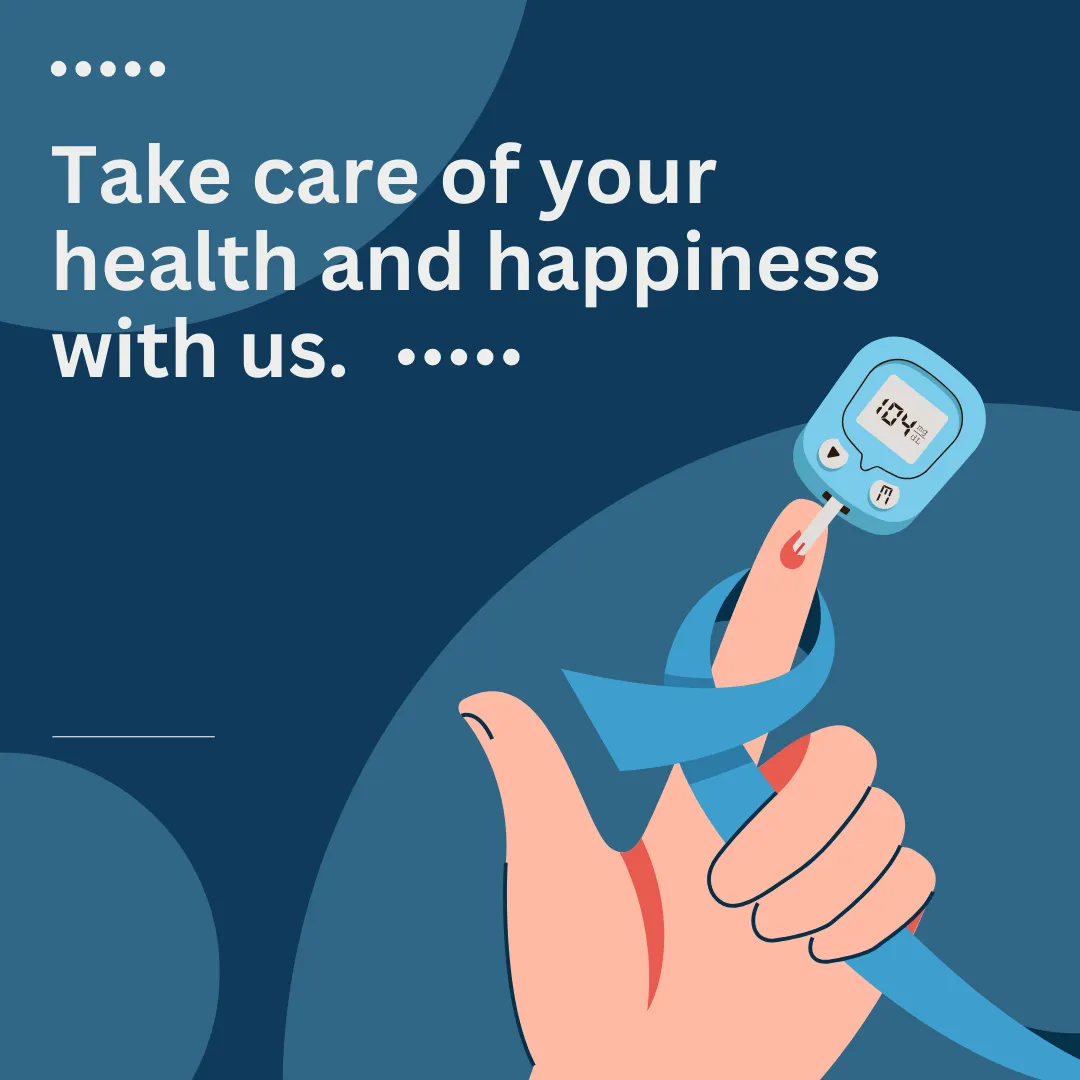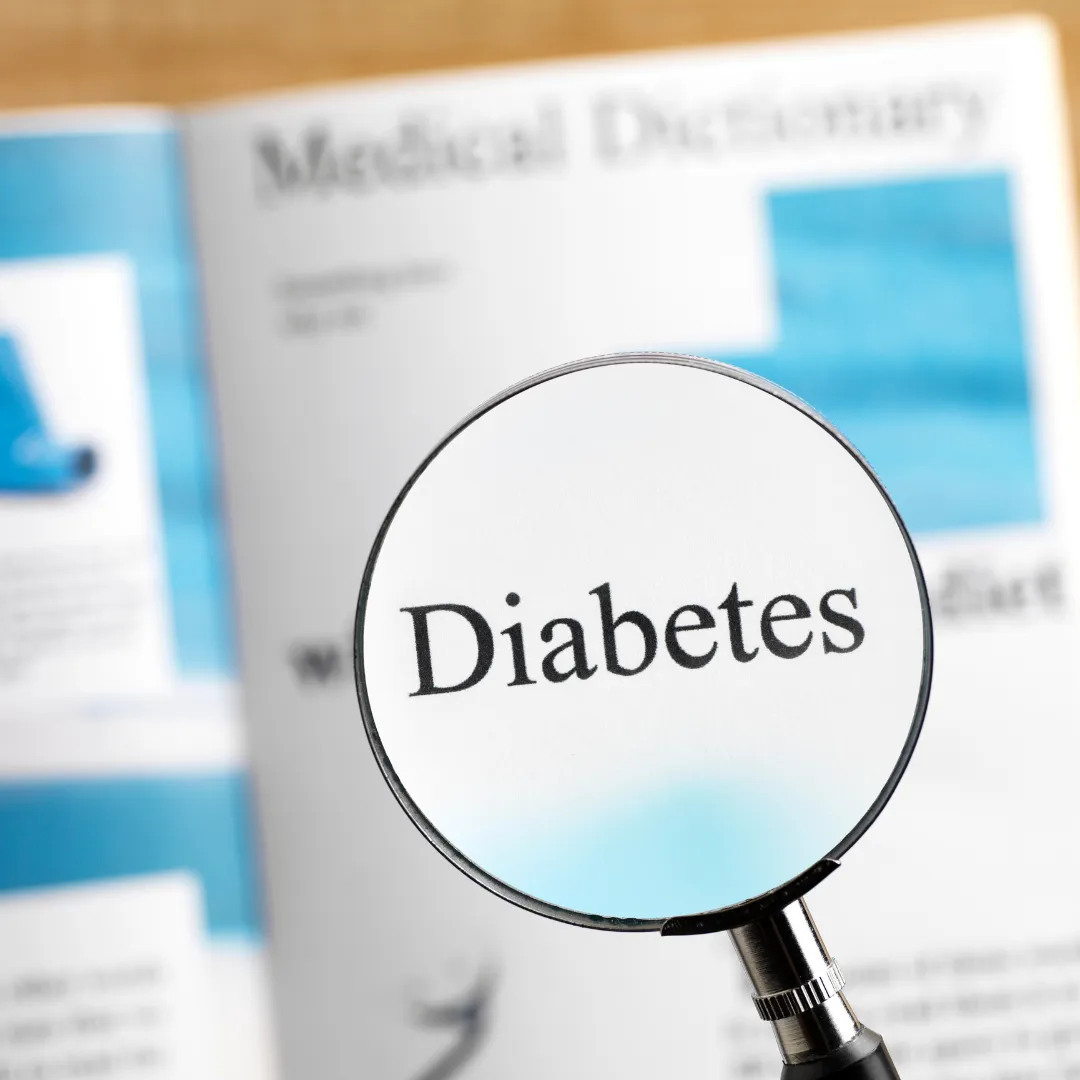Healthy Results Blog

The Sweet Balance: Mastering the Art of Managing Diabetes and Low Blood Sugar
Imagine you're a tightrope walker, high above the ground, with nothing but a thin line between you and the world below.
You need to maintain your balance to ensure you don't fall. This is what managing diabetes and low blood sugar feels like. It's a constant balancing act between diet, exercise, medication, and stress management.
The goal? To keep your blood sugar levels stable, avoiding both high peaks and low valleys. This is your "Sweet Balance" strategy.
#1: The Dietary Balance - Your Safety Net: Food plays a crucial role in managing diabetes. Think of it as your safety net while walking on that tightrope. If you consume too much sugar or carbohydrates, it's like shaking that rope - your blood sugar levels will skyrocket. Your strategy? Count your carbs and watch your sugar intake. Choose foods rich in fiber, lean proteins, and healthy fats to keep those levels steady. And remember to eat regular meals throughout the day – skipping meals can lead to low blood sugar.
#2: The Exercise Equilibrium - Your Balancing Pole: Regular physical activity helps lower blood glucose levels and boosts insulin sensitivity. Consider it as your balancing pole - it helps stabilize those shaky moments on the tightrope. Find an exercise routine that suits you – be it brisk walking, swimming or cycling – and stick with it consistently. But remember to check your blood sugar before exercising - if it's too low, have a small snack first to prevent hypoglycemia.
#3: The Medication Management - Your Safety Harness: Medications are essential tools for managing diabetes effectively - they're like the safety harness that catches you when you stumble on the tightrope. Ensure you take prescribed medications at fix times and dosages. If side effects bother you or if they aren't working well enough, talk to your healthcare provider. Never adjust dosages or stop taking medication without professional advice.
#4: The Stress Control - Your Training Ground: Stress can cause blood sugar levels to rise. Consider it as your training ground - the better you handle stress, the more adept you become at walking that tightrope. Practice relaxation techniques like deep breathing, yoga, or meditation. Even a simple activity like reading a book or listening to music can help lower stress levels and stabilize blood sugar.
#5: The Regular Check-Up - Your Performance Review: Regular health check-ups provide an overview of how well you're managing your diabetes. It's like a performance review that helps identify any areas of improvement in your tightrope walk. Schedule regular appointments with your healthcare provider and get necessary tests done. This helps detect any potential complications early and keeps your diabetes management plan on track. Remember, mastering the art of managing diabetes and low blood sugar is all about maintaining balance – in diet, exercise, medication, and stress management.
Try the "Sweet Balance" strategy and see how it improves your health outcomes.
I'm eager to hear about your path towards achieving this balance. Feel free to share your experiences!
Kind regards, -Healthy Results Team

How to Keep Your Energy Levels Soaring and Fatigue at Bay!
Think of your body as a finely tuned sports car.
The fuel it runs on? Glucose, or sugar in your blood. Just like a high-performance vehicle, your body needs the right amount of fuel to function optimally. Too much, and you risk crashing into the barriers of diabetes. Too little, and you're stuck in the pit lane with fatigue and dizziness.
So how can you navigate this racecourse of blood sugar balance skillfully? Let's explore some strategies that will help you keep your engine purring smoothly.
#1: Meal Mapping: The Route Planner Consider each meal as a pit stop where you refuel. To maintain steady energy levels, aim for smaller, frequent meals throughout the day instead of three large ones. This approach keeps your glucose levels stable, preventing those dreaded energy crashes post meals.
#2: Nutrient Navigating: The Fuel Mix Not all fuels are created equal! Carbohydrates break down into glucose quickly, causing a sudden surge in energy followed by an inevitable crash. Proteins and fats burn slower, providing sustained energy release. A balanced meal should include all three macronutrients - think lean proteins, whole grains, and healthy fats like avocados or nuts.
#3: Fiber Focus: The Speed Bump Fiber is like a speed bump on your glucose highway - it slows down the absorption of sugar into your bloodstream, preventing those dangerous spikes and dips. Foods rich in fiber include fruits, vegetables, legumes and whole grains.
#4: Hydration Highway: The Smooth Ride Staying hydrated is crucial for maintaining optimal blood sugar levels. Dehydration can cause your liver to produce more glucose while simultaneously inhibiting insulin production - a double whammy for blood sugar spikes!
#5: Exercise Expressway: The Fast Lane to Balance Physical activity is like a turbo boost for your body's insulin sensitivity. Regular exercise helps your cells absorb glucose more efficiently, keeping your blood sugar levels in check.
#6: Stress Steering: The Detour Stress is a hidden speed trap on your blood sugar highway. It triggers the release of hormones like cortisol, which can cause blood sugar spikes. Mindfulness practices such as yoga or meditation can help you navigate these stress detours effectively.
#7: Sleep Schedule: The Pit Stop Finally, consider sleep as your essential pit stop for repair and rejuvenation. Lack of sleep can affect your body's insulin sensitivity, leading to higher blood sugar levels. Aim for 7-9 hours of quality sleep each night. So there you have it - the roadmap to mastering the art of blood sugar balance!
Remember, every journey starts with a single step. Start implementing these strategies today and watch as your energy levels soar and fatigue becomes a thing of the past!
Best, - Healthy Results Team

How to Keep Your Energy Levels Soaring and Fatigue at Bay!
12 Science-Based Weight Loss & Healing Tips
What does it take to heal and to lose weight? A lot of people are trying various means to shed off some pounds. Some of these ideas require a lot of sacrifices without a guarantee of positive results. There can even be a chance that some of these weight loss schemes may bring potential harm to our bodies. To avoid wasting time and energy, here are the 12 Science-based tips that can help us heal and lose weight:
1. Eat These Good Foods
• Eggs and protein-rich foods - Studies show that having breakfast with eggs will help us consume fewer calories within the day. Satiety will increase when we eat protein-rich foods, like eggs, and this will make us feel full throughout the day.
• Spicy foods - A diet containing a bit of spice can make us lose our appetite. Chili peppers naturally contain capsaicin. It is a chemical that increases body heat and allows our metabolism to speed up.
• Foods rich in fiber - Apples, sweet potatoes, berries, and chickpeas. All these foods will help us stay fit. Apart from being nutritious, fiber can make us feel less hungry. The body digests sugar and starch way faster than fiber-rich foods.
• Consume whole foods - A diet with whole food means munching on foods in their natural form or at least close to their naturals. It's important to eat whole grains than refined ones, vegetables, and fruits instead of supplements, or chicken breasts than the commercial nuggets. These unprocessed food forms contain more nutrients than their alternatives.
2. Don't Eat These Foods
• Refined grains and sugar are less nutritious than their natural forms. Studies show that these refined carbs can spike our blood sugar level quickly, and this will make us feel hungry more often. Since refined carbs no longer have enough fiber, we may have more cravings that can make us consume more sugary foods.
• Avoid added sugar and make sure that we are aware of what is in our food. Sugar consumption is critical. Excessive eating of foods with much sugar content can lead to diseases. Losing weight is not possible since foods loaded with sugar can make the body gain more fat.
3. Drink These
• Water - A natural suppressant of appetite. The stomach senses when a person is hungry, but when water fills in our tummy, it sends a signal to the brain to stop eating. A person may also feel hungry even when he is only thirsty. So, if we will drink enough, we won’t have to eat so much. Water helps eliminate our wastes. It means that the kidneys will no longer retain fluid. We can also reduce bloating in the tummy by a regular bowel movement.
• Green Tea - A cup of green tea can increase the number of antioxidants in our blood. Among these are the catechins. An essential substance called EGCG or epigallocatechin gallate can improve our metabolic rate. Green tea extract can help us burn calories even without exercise. Its primary work is to help us lose our visceral fats.
• Coffee - Black coffee contains chlorogenic acid. It can slow down the release of glucose in the body. It also has antioxidants and caffeine that are effective in increasing metabolic activity. Black coffee can also help reduce the extra water weight in the body.
4. Don't Drink These
• Soda is responsible for our belly fat. This drink is addictive, even if it doesn’t have any nutritional value. It contains a high amount of sugar or aspartame as an artificial sweetener. Apart from being harmful to health, aspartame can cause various diseases.
• Fruit juice and other sugary drinks - Fresh fruits and vegetables are very nutritious. These are effective for detoxification. Juicing, however, can strip off the fruits and vegetables of their fiber content. To lose weight, it's important to consume whole foods in their original state.
5. Supplements
• Probiotic supplements can reduce fat mass. Lactobacillus strain is a good bacterium. They are the microorganisms inside our body that helps in breaking down food and absorbing nutrients.
• While whole foods work best, we may still resort to protein supplements to fill what our diet lacks. Whey protein can be a good alternative. Our intake of calories will be less, and that will make us lose weight. We will also feel that we have built our muscle mass.
6. Workout
A sedentary lifestyle can bring about harmful effects. It is a bad habit that needs to stop. It's important to engage in active sport or regular exercises to avoid gaining weight. There are health risks associated with a lax lifestyle. Our body will burn very few calories, and our metabolism will become slow. We might become obese that can lead to dangerous health conditions. Aside from that, there are more diseases that can come from this kind of bad habit.
7. Get Enough Sleep People who get enough sleep through the night can lose more weight from stored fats. When we restrict ourselves from getting quality sleep, our body will produce a higher amount of ghrelin that can make us feel hungry. Lack of sleep can also affect how we will function throughout the day. We might get tired and make poor decisions when it comes to food.
8. Try Intermittent Fasting If we do not have any underlying health issues, people may resort to intermittent fasting. It is an eating technique wherein we will restrict our food intake during a specific number of hours in a day. It is efficient and effective, as long as we will not try to eat more during the period we are not fasting. We may experience better results once we have reached autophagy or fasting for more than 72 consecutive hours.
9. Calorie Counting and Portion Control A portion refers to the quantity of food that we eat. Eating smaller pieces or lesser amounts consistently can help us lose weight. Counting calories is a bit complex, but most people do this by making a list of low-calorie foods. Studies show that being aware of the food that we eat can also help us stay fit. By taking pictures or keeping a diary, we can set a goal and watch every milestone. It helps in keeping us on track even after we failed in one meal.
10. Low-Carb Diet A diet that restricts carbohydrates works, especially if coupled with the reduction of sugars and starches. A low-carb diet means eating more healthy foods like fruits, vegetables, fishes, eggs, and lean meat. We will have to ditch the rice, cakes and other sweets, and even milk.
11. Avoid Emotional Eating Negative emotions can disturb our weight-loss goals. It may affect our eating behavior since food can distract our mind from stress, pain, and hurt. Our emotions can make us overeat. So, we have to keep temptations away. It's helpful not to keep our comfort foods in our pantry. Stock up on healthy foods instead. We may also experience overpowering cravings whenever upset. Try not to give in and control our eating habits to prevent further depression.
12. Trick The Mind There are several ways to trick our minds into flushing our eating temptations away. Here are some effective means people may try
• Use smaller plates. - This trick can make us stop eating because it will look like we already ate a lot.
• Chew slowly. – The more we chew our food, the slower we put food in our mouth. So, we will eat less until the brain thinks that we’ve eaten enough.
• Drink more water. – Sometimes we eat when in fact, we are just thirsty. When we drink enough water, the hunger hormones will give us the right signal when we are hungry.
• Keep whole fruits and vegetables at hand. – Prepare healthy and easy to bring whole foods for snacks. These healthy whole foods will make us feel full whenever we are hungry. Begin tapping into the body’s true potential easily, naturally and automatically... overnight.
Remember, every journey starts with a single step. Start implementing these strategies today and watch as your energy levels soar and fatigue becomes a thing of the past!
Best, - Healthy Results Team